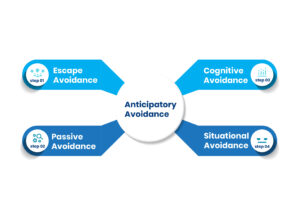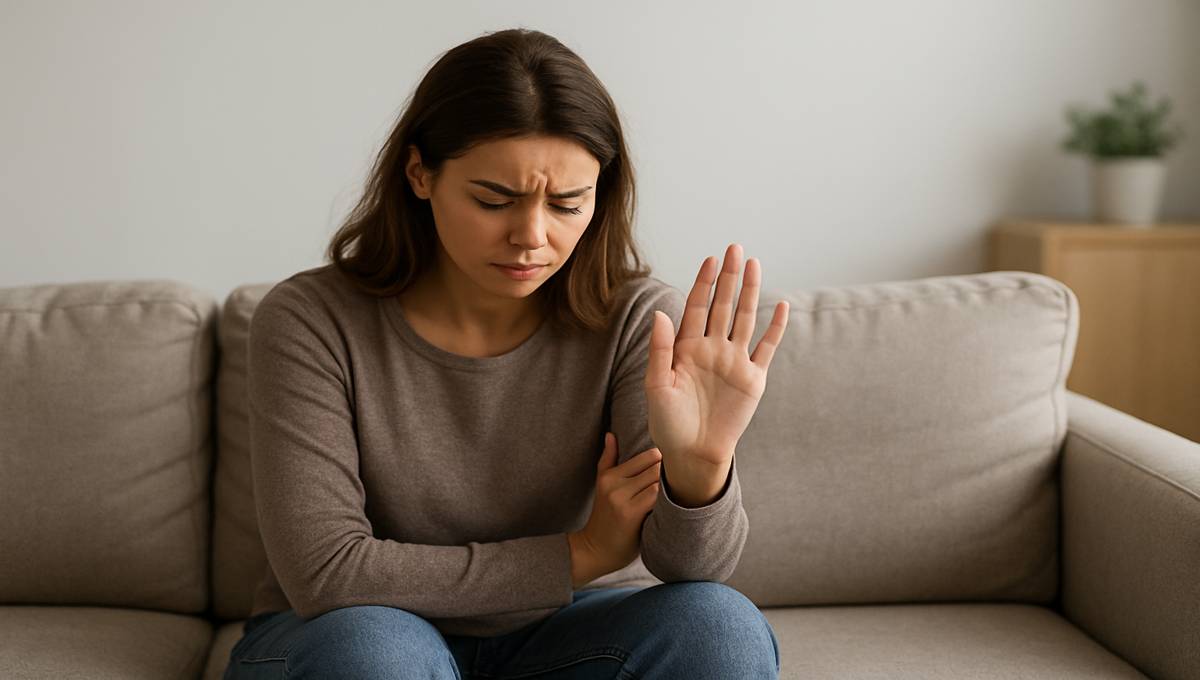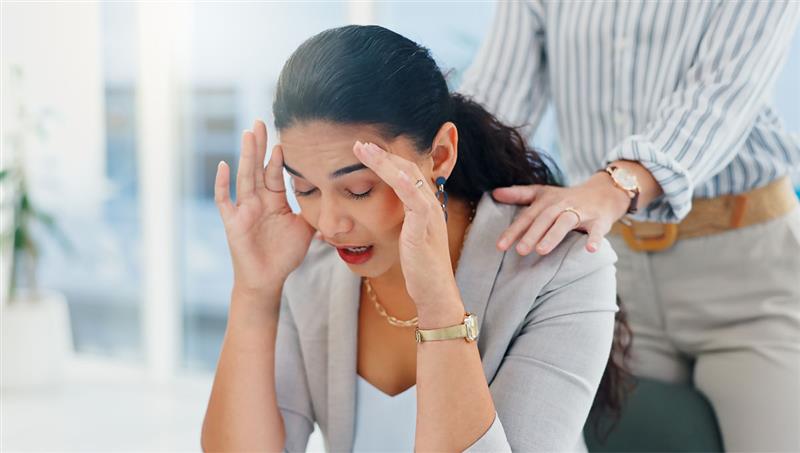Do you ever find yourself putting off a difficult conversation, declining social invitations you secretly want to attend, or ignoring a growing pile of bills? This pattern of sidestepping uncomfortable situations, thoughts, and feelings is known as avoidance behavior. While it offers temporary relief, it often creates bigger problems in the long run.
This article will explore the complexities of avoidance behavior. We will cover what it is, its different forms, and how it impacts relationships, work, and your overall well-being. Most importantly, you will learn practical strategies to overcome it and regain control of your life.
What Is Avoidance Behavior?
Avoidant behavior refers to the behaviors that people engage in in order to escape activities, occurrences, or emotions that make them upset or anxious. Instead of facing a problem, there are those people who can choose to evade it or defer it. This habit may provide a short-term relief, but in the long term, it tends to aggravate the problem. As an illustration, one can delay work to reduce stress or shun socialization to evade anxiety. Such evading ends up causing a vicious circle that is hard to overcome.
In addition, avoidance behavior can be triggered by several things, such as a desire to avoid some negative feelings or a phobia of rejection or failure. Working on something guaranteed us to lose the chance to learn management skills. Instead of avoiding pain, it can be directly dealt with to reduce anxiety and raise self-esteem. Therefore, it is critical to understand and manage to free ourselves from the loop and become more emotionally resilient.
Symptoms of Avoidance Behavior
Here are the signs of the avoidance behavior:
- Postponing work and procrastinating.
- Shy away from socializing or associating with other people.
- Avoiding arguments or uncomfortable conversations.
- Incidentally engaged in distractions such as TV or social media.
- Excuses to avoid difficult circumstances.
- Pulling out emotionally in relationships or activities.
- Feeling nervous in response to unpleasant circumstances.
What Causes Avoidance Behavior?
The following are the causes of avoidance behavior of an individual:
- Anxiety about loss or the negative experiences in the past.
- Fear of possible humiliation or criticism.
- The absence of confidence and control over particular situations.
- The wish to get relieved of distress or stress.
- Avoiding a situation because it will cause emotional pain.
Types of Avoidance Behavior

Escape Avoidance
Escape avoidance is a behavior in which a person takes active action to take him or herself out of a stressful or unpleasant situation to avoid discomfort. One can normally develop this behavior as a result of immediate anxiety or fear. The person is isolating themselves physically, thus relieving their distress in the moment. With time, the act can promote the assumption that stress avoidance gives relief. But this can make them fail to learn how to cope with discomfort in the long term.
Passive Avoidance
Passive avoidance occurs when one tries to avoid a situation by not doing anything or refusing to do anything. This type of avoidance can be either procrastination or refusing to participate in an activity that can be stressful. Passive avoidance is the method people tend to use to postpone having to face something awkward. Similarly, it might provide some relief in the short term, but it can result in more anxiety and adverse results in case of the situation is constantly denied.
Cognitive Avoidance
Cognitive avoidance can be defined as the process of the psyche or mind diverting itself from distressing thoughts or emotions. Individuals who practice cognitive avoidance attempt to repress or deny their emotions and may do so by thinking about other things or doing other things. Therefore, this kind of avoidance can temporarily decrease emotional pain, but the individual is not able to solve the underlying problems. Gradually, cognitive avoidance may result in anxiety because the unresolved emotions will reappear. It can make people not develop healthy coping strategies as well as emotional strength.
Situational Avoidance
Situational avoidance is the avoidance of certain places, activities, or situations that cause anxiety or discomfort. This is a tendency that is usually a reaction to the negative experiences of the past or the danger of experiencing such events. Although it will provide some short-term relief, it will restrict growth and enhance the fears of the person. Situational avoidance may eventually result in a lonelier or confined life.
Anticipatory Avoidance
Anticipatory avoidance refers to situations where people would evade a situation due to fear or anxiety of what may occur in the future. They tend to think about the worst thing and take preemptive measures to prevent the potential failure, rejection, or embarrassment. This is a result of being worried and unsure of what can happen. It might be protective, but it does not allow individuals to face challenges or new experiences. Proactive avoidance may fuel anxiety and restrain an individual.
Avoidance Behavior in Relationships
Fear of conflict or rejection in relationships is the root cause of avoidance behavior. Individuals will avoid confronting unpleasant situations that might cause unpleasant emotions. As an example, a person may not want to talk about such significant matters as finances and plans or even feelings, hoping that the issue will fix itself.
Additionally, avoidance of fear in a relationship may result in withdrawal of emotions and a lack of communication. By avoiding the difficult issues all the time, people become unable to actually connect or know one another. They end up avoiding instead of being afraid of it collectively. This leads to a weaker and less sturdy relationship that is more difficult to establish trust and closeness with. In the long run, such conduct may lead to a broken emotional relationship between the couple.
Avoidance Behavior Examples
Avoidance is a part of everyday life for many. Here are some common examples:
- Making excuses to miss a party where you won’t know many people.
- Repeatedly canceling a dentist appointment due to a fear of the procedure.
- Changing the subject whenever a friend brings up a past traumatic event.
- Refusing to use an elevator and only taking the stairs, even if it’s 20 floors up.
- Not applying for a promotion because you fear the responsibility or the possibility of rejection.
Avoidance Behavior in Adults
Avoidance behavior in adults is usually prevalent when they are confronted with circumstances that create anxiety or stressor situations. As an instance, they may avoid socializing, work, or challenging discussions to avoid feeling uncomfortable. Individuals may also complain and postpone duties, thinking that by postponing, they will minimize stress. This avoidance may later turn into a lifestyle that influences their personal and professional life.
Furthermore, adult fear avoidance behavior may lead to problems in the relationships and general well-being of the adults in the long term. When people evade difficult situations, they will develop anxiety and a lack of confidence in dealing with any difficult situation. Besides, this practice may restrict their interpersonal relationships and professional development as they avoid new experiences or changes. Thus, adults can learn to cope healthier and develop better mental and emotional health by working on the causes of their fears.
How To Overcome Avoidant Behavior?
Understand Your Avoidant Behavior
The first step to counteracting avoidant tendencies is to understand them. By recognizing them, you will become aware of their effects on your life. In so doing, you will be able to take charge of the root causes and consciously take action to change.
Practice Facing Your Fears Gradually
Begin by exposing yourself to the circumstances that bring about your avoidant behavior in small steps that are easy to handle. Step-by-step exposure will enable you to develop resilience, and the feeling of being overwhelmed with fear will be minimized. Whenever you face a fear, you gain confidence and become less avoidant. This process makes dealing with uncomfortable situations easier over time.
Build Self-Compassion and Self-Acceptance
Rather than blaming yourself because you do not want to be in these situations, use self-compassion. Also, realize that everybody is afraid and insecure, and there is nothing wrong with feeling vulnerable. You can accept your feelings and work on accepting yourself the way you are, without being judgmental. Such self-acceptance promotes emotional development and assists in getting out of avoidance patterns.
Develop Healthy Coping Strategies
Learn to cope with challenging moments by engaging in healthy coping techniques such as mindfulness or journaling instead of avoiding the challenges. These are measures that keep you in the present and enable you to process emotions. Drawing on mindfulness, you will be in a position to separate yourself from preoccupying thoughts that contribute to avoidance.
Seek Professional Help if Necessary
In case your avoidant behavior has a strong influence on your life, therapy can help. A therapist is able to offer professional advice and coping skills that will be specific to your circumstances. In the process of professional help, you will be able to understand more and approach more positive emotional reactions.
Closing Note
At MAVA Behavioral Health, we know how difficult it is to overcome avoidance behavior, and we provide a complete treatment program to meet your needs. With a combination of medication, our expert team targets the underlying causes of avoidance behavior so that success can be long-term. We provide both telehealth and in-clinic visits, and we will make it convenient for your lifestyle. You like the comfort of online consultation or the empathy of physical treatment; either way, we are here to help you through it step-by-step. Contact us now and start your own process of getting over your avoidance habit and regaining your health.
FAQs
What is the cause of avoidance behavior?
Avoidant behavior is usually a result of fears or anxiety or some negative experience in the past. Individuals can escape some circumstances because they fear failure, rejection, or pain. Also, it may be an acquired reaction in childhood or the consequence of traumatic experiences.
How to stop avoidance behavior?
The first step to preventing avoidance behavior is to identify when and why you avoid situations. Progressively desensitize yourself to feared situations, engage in self-compassion, and develop more adaptive coping mechanisms.
Does it have avoidance behavior as an indicator of anxiety?
Yes, anxiety is usually a companion of avoidance behavior. When people are anxious about the possible bad things or disapproval, they can avoid the situations that trigger their anxiety. In the long term, avoiding build-up anxiety may inhibit self-development. The combination of both anxiety and avoidance behaviors can be addressed to break the cycle.
Is avoidance behavior a learnable behavior?
Yes, it is possible to learn avoidance behavior using past experiences. When a person has been criticized, rejected, or experienced negative consequences in some circumstances, they might avoid such circumstances as a response to it.
Can I tell whether I am exhibiting avoidance behavior or not?
Some of the signs of avoidance behavior are always postponing or evading activities, refusing to face challenging emotions or situations. When you often find yourself isolating yourself or skipping chores that you have to do, you are possibly being avoidant.









